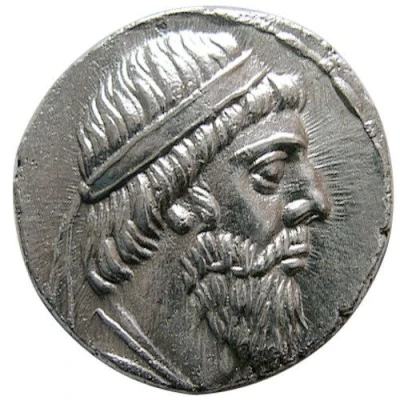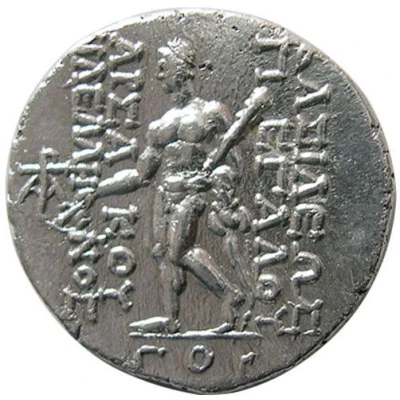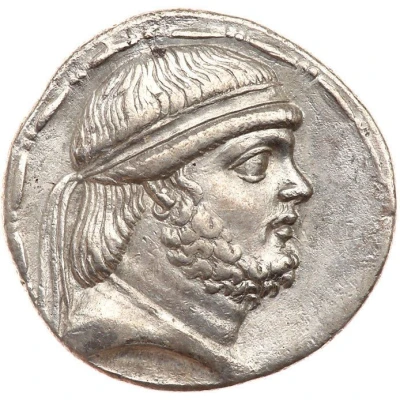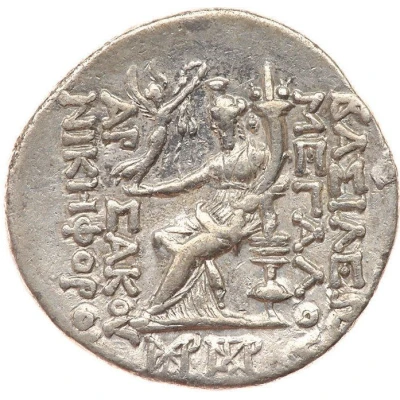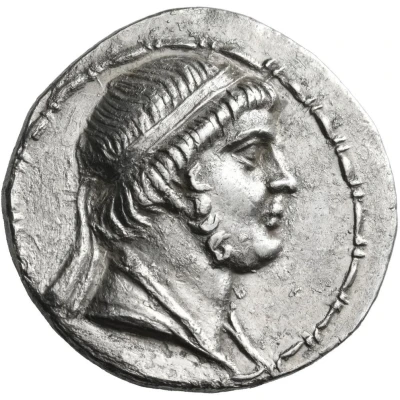
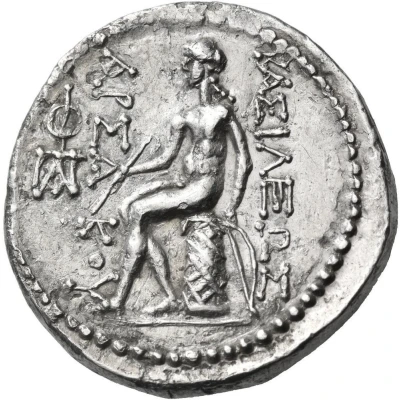

© Nomos AG
Tetradrachm - Phraates II 132 BC
132 BC year| Silver | 16.34 g | 27 mm |
| Issuer | Parthian Empire (Parthian Empire (247 BC - 224 AD)) |
|---|---|
| King | Phraates II (135 BC - 128 BC) |
| Type | Standard circulation coin |
| Year | 132 BC |
| Value | Tetradrachm (4) |
| Currency | Drachm (247 BC-224 AD) |
| Composition | Silver |
| Weight | 16.34 g |
| Diameter | 27 mm |
| Shape | Round (irregular) |
| Technique | Hammered |
| Orientation | 9 o'clock ↑← |
| Demonetized | Yes |
| Updated | 2024-10-10 |
| Numista | N#384026 |
|---|---|
| Rarity index | 100% |
Reverse
Apollo seated left on omphalos, holding arrow in his right hand and resting his right on his bow; in outer left field, monogram of ΦΙΠΑ.
Lettering:
BAΣΙΛΕΩΣ APΣAKOY
ΦΙΠΑ
Edge
Plain
Comment
The tetradrachm coinage struck at Susa under Phraates II is extremely rare in general, but the absence of any letters in the exergue of the present piece places it at the very top of the rarity pyramid within the series. With the exception of the rarity, exemplary condition, and beauty of the present piece, which are clear and self-evident, the Susian tetradrachm coinage of Phraates II as a whole is somewhat mysterious and has been variously interpreted by numismatic scholars.Part of the argument for placing the series under Phraates as viceroy derives from the remarkable reverse type, which is not the well-established Parthian archer type, but instead bears a representation of Apollo derived from the coinage of the Seleukids-previous masters of Susa and Elymaïs before native rulers took control in the 140s BC. Since these local dynasts habitually employed the Seleukid Apollo type as a means of lending legitimacy to both their rule and their coinages, it was assumed that the god on Phraates coins also cast him as a kind of local ruler. However, it may be that Apollo was being used on Phraates' coinage in a civic context in the same way that the city goddess Tyche was used on his tetradrachms at Seleukeia-on-the-Tigris. I.e., after the long use of Apollo by the Seleukids at Susa, even after the kings began to prefer personal types, and through its continued use by the Elymaïan dynasts, it had become internalized as the civic type of Susa.
Interesting fact
One interesting fact about the Tetradrachm - Phraates II (132 BC) coin from the Parthian Empire is that it features a unique blend of Iranian and Hellenistic influences in its design. The coin's obverse side features a portrait of Phraates II, while the reverse side depicts a seated archer, a common motif in ancient Persian art. This blending of cultural styles reflects the complex history and cultural exchange that occurred during the Parthian Empire's reign.
